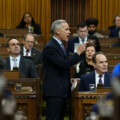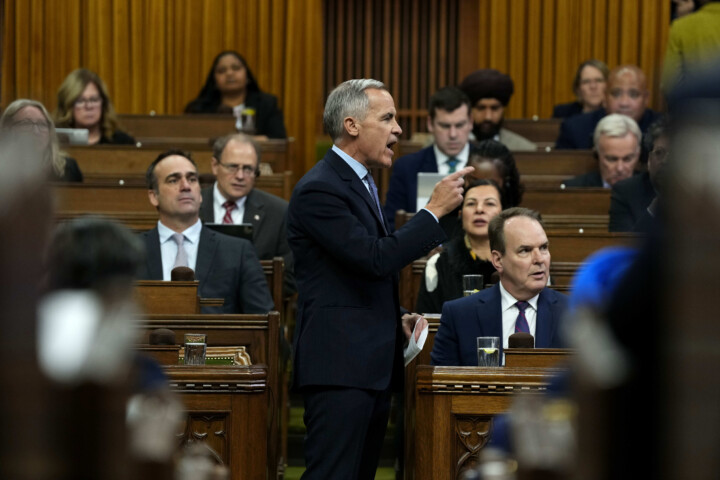Prime Minister Justin Trudeau’s climate policy is at a watershed.
As concerns mount over the pace of progress toward Canada’s aggressive emissions reduction targets—most recently from the country’s environment commissioner—there are growing worries the government will resort to a full-on charge against the oil and gas sector to regain some of the momentum.
The government appears to be committed to an emissions cap for the industry, possibly in the form of more stringent carbon pricing for oil and gas firms or through an industry-specific cap-and-trade system. Just last week, Environment and Climate Change Minister Steven Guilbeault reiterated on multiple occasions the plan is to move ahead by the end of this year.
It all seems punitive and short-sighted.
Singling out the industry will hurt the pocketbooks of all Canadians and suffocate revenue from government, companies, and Indigenous communities. It will stoke regional tensions with Alberta and other provinces, undermining public support for lowering emissions.
And, as others have written, an emissions cap would weaken the very foundation of the government’s signature climate policy—its carbon pricing regime—that it worked so hard to create.
The end result would be to make Canada’s climate policy landscape even more incoherent after a series of setbacks in recent weeks, leaving the country with an expensive piecemeal approach to climate, subject to political whims and reversals and the prospect of years of legal battles.
Companies will be deprived of the policy certainty and political consensus needed to proceed with the historic energy transformation estimated to require a $2 trillion investment by 2050.
Should it proceed with the cap, the federal government will claim it is targeting carbon emissions and is agnostic about production, but that’s semantics. To work, a cap would ultimately need to be severe enough to curtail production if needed, and that would have significant economic consequences.
It would be a direct and immediate loss of income for Canada’s economy and a hit on federal government revenues. There would be significant indirect costs as well, incurred by every household and business across the nation because Canada relies on income generated by oil and gas companies—totaling $270 billion in 2022 alone—to support social programs like health care, education, and infrastructure.
Without those receipts, our dollar could weaken to rebalance our merchandise trade, and we’d all be poorer. A weaker currency also implies higher interest rates as rising prices for imports would force the Bank of Canada to keep borrowing costs higher than what would otherwise be needed. The nation’s debtors and homeowners, in other words, also have skin in the game.
Christopher Ragan, Paul Rochon, and Mark Jaccard—in a paper for The Hub in June—estimated that a production phase-out would cost the economy between 1 and 7 percentage points of GDP by 2050—a major loss of income to all Canadians.
To be sure, the federal government is in an unenviable position.
There’s no credible climate change plan for Canada that doesn’t include a significant contribution from the oil and gas sector.
But there are better options than an emissions cap.
For starters, the government can turn its focus to delivering what’s already been promised.
The federal government has yet to put into law any of the investment tax credits it’s announced over the last two budget cycles or deliver on a pledge to streamline its much-maligned regulatory approval procedures—a necessary condition to hit the climate targets.

Meanwhile, signature programs offered by Canada’s innovation department, the Canada Infrastructure Bank, and the newly created Canada Growth Fund are undoubtedly important for de-risking investments. But big questions remain about how these programs can work together—and with other government incentives—to address Canada’s most pressing emissions challenges.
There’s also the unanswered matter of how the government plans to deliver so-called contracts for differences—effectively a commitment by the state to compensate businesses that invest in green technology should the carbon pricing schedule be removed or delayed. This certainty is critical for businesses to proceed with massive investments.
Decisions the federal government will make in the next few weeks and months will determine—to various degrees—Canada’s growth potential over the next decade, the pace at which incomes for workers will be able to grow, fiscal capacity at the federal and provincial levels to pay for social programs, and our ability to curtail inflationary pressures and bring rates down.
That makes shutting down parts of the country’s biggest export-earning industry an ill-advised move for any credible and sustainable climate plan.
Recommended for You

Carney gets a majority, but Canadians vote the Liberals out in a snap election: The Hub predicts 2026

A rocky road for Ontario, and an unconventional CUSMA renegotiation: The Hub predicts 2026

Poilievre will survive as CPC leader, and Canada will stay golden in men’s hockey: The Hub predicts 2026

Supply management will be sacrificed to appease Trump, and the Netflix takeover is bad for Hollywood: The Hub predicts 2026



